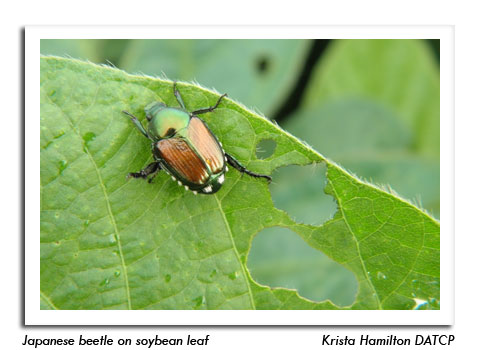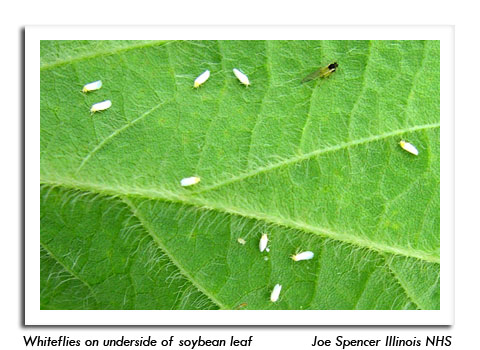
 |
|
|
Soybeans
Volume 60 Number 15 Date 07/30/2015 SOYBEAN APHID - Observations from the annual aphid survey currently under way suggest populations are increasing but remain low for late July. Only one of the 44 fields sampled as of July 29 had an average count greater than 25 aphids per plant on 100% of the plants, with individual plant counts of 124-200 aphids per plant. All other fields had averages below 18 aphids per plant. Soybean aphids can reproduce rapidly under the warm, dry weather pattern predicted for early August, with the greatest population growth occurring at temperatures of 70-80°F. Insecticide treatment, if required, is most effective when applied during the R2-R4 (full bloom to full pod) stages. JAPANESE BEETLE - Light to moderate defoliation is common in soybeans, though treatment has not been justified for any field sampled so far this season. The economic threshold for Japanese beetle and other leaf feeding soybean pests is 20% defoliation between bloom and pod fill. WHITEFLY - Minor infestations were observed this week in soybeans in the west-central and southwest counties. Whiteflies are a common pest of greenhouse plants and commercial vegetables with high reproductive potential and known resistance to several insecticides. Their sporadic appearance in Wisconsin soybeans is primarily a curiosity since yield reductions have never been documented. -- Krista Hamilton, DATCP Entomologist 


|
|
|